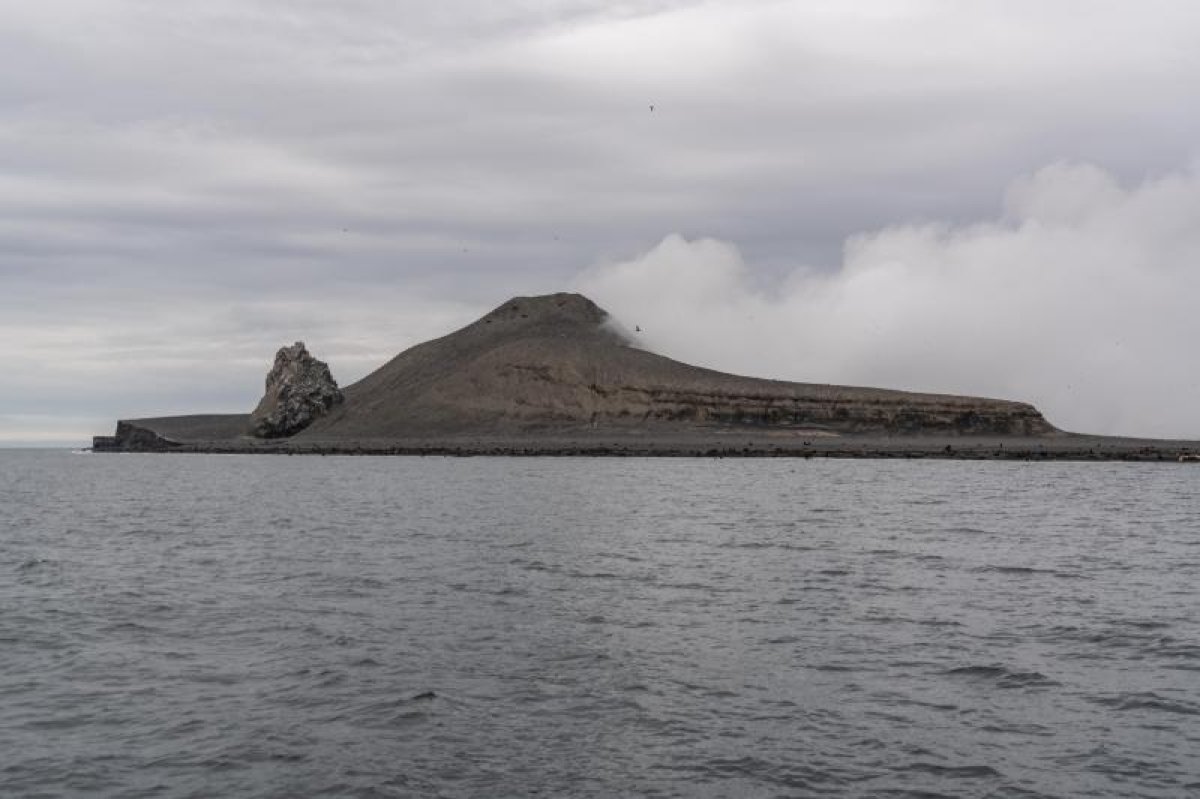Researchers have observed a submerged volcano in Alaska producing giant, explosive gas bubbles, some of which may be larger than a sports arena.
According to a study published in the journal Nature Geoscience, a team of scientists—led by John Lyons from the U.S. Geological Survey's (USGS) Alaska Volcano Observatory—documented the phenomenon two years ago at Bogoslof, one of the Aleutian Islands.
Bogoslof is the largest of a cluster of small, low-lying islands that comprise the summit of a submarine volcano at the southern edge of the Bering Sea. The volcano rises about 6,000 feet from the seafloor but only extends for a maximum of 300 feet above sea level at its highest point.
Despite some parts rising above the water, the volcano does not eject lava and other material from the summit. Instead, it releases material from vents roughly 320 feet below sea level, Science magazine reported.
Evidence from passing ships has indicated that submerged volcanoes like Bogoslof release giant bubbles that create violent explosions around the sea surface—a phenomenon that is the result of magma being rapidly cooled by water as it shoots out of submarine vents.
However, the inaccessibility of many submerged volcanoes and the hazardous nature of the exploding bubbles has meant scientists don't know much about this peculiar phenomenon.
For the latest study, Lyons and colleagues deployed low-frequency microphones—which detect "infrasound"—in the ocean 37 miles south of the underwater volcano in order to examine the bubble explosions.
Infrasound is sound lower in frequency than 20 Hz, below the normal limit of human hearing.
Over a period of nine months, they observed the volcano, during which it erupted more than 70 times. Just before each eruption, the scientists detected characteristic sound waves that matched those produced by the exploding bubbles, according to computer models, revealing new details of this natural process.

"We show that the infrasound originates from the oscillation and rupture of magmatic gas bubbles that initially formed from submerged vents, but that grew and burst above sea level," the authors wrote in the study.
"We propose that the dominant role of seawater during the effusion of gas-rich magma into shallow water is to repeatedly produce a gas-tight seal near the vent.," they wrote. "This resealing mechanism leads to sequences of violent explosions and the release of large, bubble-forming volumes of gas."
The scientists say that some of the bubbles at Bogoslof—which contain a mixture of gases, such as water vapor, carbon dioxide and sulfur dioxide—may have measured up to around 1,400 feet in diameter, Science reported.
Gas bubbles like these have been known about for more than a century. However, researchers say the latest study presents a "unique geophysical record" of this phenomenon.
Uncommon Knowledge
Newsweek is committed to challenging conventional wisdom and finding connections in the search for common ground.
Newsweek is committed to challenging conventional wisdom and finding connections in the search for common ground.
About the writer
Aristos is a Newsweek science reporter with the London, U.K., bureau. He reports on science and health topics, including; animal, ... Read more
To read how Newsweek uses AI as a newsroom tool, Click here.








